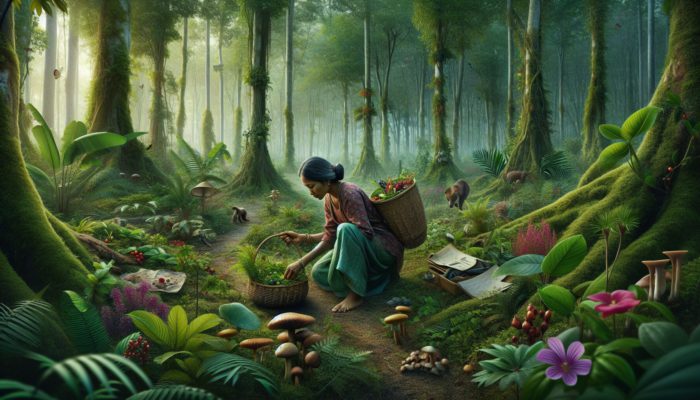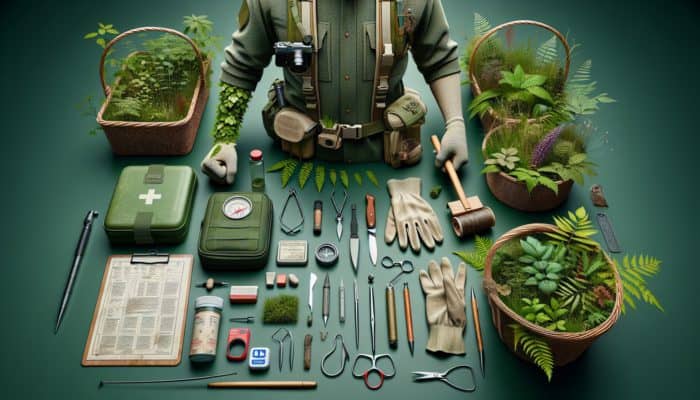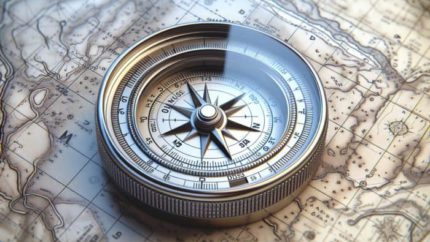Discover the Art of Foraging: A Comprehensive Guide
What Exactly is Foraging?

Foraging Survival Guide: Foraging is the practice of searching for and harvesting wild food resources, an age-old tradition that is deeply embedded in human history and essential for survival. This ancient skill not only reconnects us with nature's diverse offerings but also provides vital sustenance during times of emergency. Foraging is more than just a means of survival; it serves as an exciting way to explore the great outdoors, appreciate biodiversity, and understand the complex relationships within ecosystems. Engaging in foraging comes with numerous benefits, including:
- Connection to Nature: Foraging fosters a profound connection with the natural world, deepening one's appreciation for both flora and fauna.
- Self-Sufficiency: It empowers individuals to gather food independently, thereby reducing dependence on commercial food sources.
- Health Benefits: Foraged foods are frequently fresher and more nutritious than their store-bought counterparts.
- Cost-Effective: This practice can substantially lower grocery bills, offering free access to an array of wild edibles.
- Physical Activity: Foraging involves walking, bending, and occasionally climbing, all of which contribute to physical fitness.
- Educational Experience: It provides opportunities to learn about plant identification, ecosystems, and sustainable practices.
The skills developed through foraging can prove invaluable, especially in survival situations, where the ability to identify edible plants can mean the difference between sustenance and starvation.
How to Stay Safe While Foraging
Safety is of utmost importance when engaging in foraging. Accurately identifying edible plants while avoiding harmful species is crucial for enjoying this rewarding activity. New foragers must equip themselves with the necessary knowledge and exercise caution to ensure a safe and enjoyable experience in the wild. Here are essential safety tips for beginners:
- Learn Plant Identification: Familiarise yourself with local flora to distinguish between edible and poisonous plants effectively.
- Start with a Guide: Utilise foraging books or apps to assist in identifying safe species before heading into the wild.
- Forage with Experienced Individuals: Join local foraging groups or workshops to learn from seasoned foragers who can share valuable insights and expertise.
- Avoid Unknown Plants: If you are uncertain about a plant’s edibility, it is best not to consume it.
- Check for Contamination: Be mindful of where you forage; steer clear of areas that may be contaminated with chemicals or pollution.
- Be Aware of Allergies: If you have allergies to specific plants, exercise caution when foraging in those areas.
Understanding these safety basics can significantly enhance your foraging experience, allowing you to enjoy the adventure while minimising the risk of adverse effects.
Practising Ethical and Sustainable Foraging
Foraging responsibly means taking only what you require and ensuring that the natural environment remains sustainable for future generations. Ethical foraging practices help maintain ecosystems, enabling them to thrive while providing resources for humans. It’s vital to acknowledge the importance of leaving sufficient resources behind for wildlife and future foragers. Here are key points regarding ethical foraging:
– Sustainability: Only take what you can use, leaving enough for wildlife and other foragers. Overharvesting can lead to the extinction of plants and disrupt the balance of ecosystems.
– Respect Local Regulations: Always adhere to local laws concerning foraging. Certain areas may have restrictions in place to protect native species.
– Leave No Trace: Practise low-impact foraging. Avoid trampling vegetation and disturbing wildlife habitats; tread lightly and show respect for the land.
– Educate Others: Share knowledge about responsible foraging practices to foster a culture of sustainability and respect for natural resources.
– Use Native Plants: Prioritise foraging native species over invasive ones to assist in managing local ecosystems.
Adhering to ethical practices not only supports biodiversity but also enriches the foraging experience, allowing for a deeper connection with nature.
Essential Tools and Techniques for Successful Foraging

Having the right tools can significantly enhance the foraging experience, making it more efficient and safe. Essential items such as knives and baskets facilitate the gathering process, while techniques like proper plant identification can lead to successful harvests. Here’s a list of common tools and techniques every forager should consider:
- Sharp Knife: A reliable knife is indispensable for cutting plants and preparing food in the field.
- Baskets or Bags: Durable baskets or bags are ideal for transporting foraged items without causing damage.
- Field Guide: A comprehensive field guide or app can help identify local edible plants and fungi.
- Gloves: Protective gloves can prevent injuries and reduce contamination from toxic plants.
- Compass or GPS: Navigation tools ensure you can safely find your way back from foraging excursions.
- First Aid Kit: A basic first aid kit is essential for addressing minor injuries during your foraging adventures.
Techniques such as observing plant patterns, understanding seasonal growth cycles, and mastering basic identification skills will transform foraging into a rewarding endeavour. The right tools, combined with effective techniques, can significantly improve your foraging success.
Legal Aspects of Foraging: What You Need to Know
Understanding local laws and regulations is crucial for foraging legally and avoiding fines or ecological damage. Different regions have various laws governing foraging, which may include restrictions on where and what can be harvested. Here are some key legal aspects to consider:
– Research Local Regulations: Before foraging, familiarise yourself with local laws to ensure compliance. Many parks, reserves, and private lands have specific rules regarding the collection of plants.
– Permits and Permissions: Some areas require permits for foraging, especially in protected or sensitive environments. Always verify whether you need permission to forage.
– Endangered Species: Be aware of any endangered or protected species in your area and refrain from harvesting them to protect biodiversity.
– Respect Cultural Sites: Foraging within cultural heritage sites or indigenous lands may be prohibited or require special permissions. Always honour these boundaries.
– Environmental Impact: Understand the ecological impact of foraging in certain areas. Some environments may be vulnerable, and overharvesting can cause long-term damage.
By staying informed about legal considerations, foragers can enjoy their activities while contributing to environmental conservation and adhering to local laws.
Expert Insights: Your Ultimate Foraging Survival Guide
What Are the Most Effective Foraging Techniques?

Different environments demand different foraging techniques, and understanding these can maximise your harvest while minimising your impact on the ecosystem. Effective foraging techniques hinge on the ability to observe, adapt, and learn from the environment. Here are some practical examples of successful foraging techniques:
– Observation: Take the time to observe your surroundings. Look for signs of edible plants, such as unique leaf shapes or flowers. For instance, in temperate forests, familiarising yourself with the appearance of ramps can lead to a bountiful harvest in spring.
– Seasonal Adaptation: Alter your foraging strategy according to the seasons. In spring, focus on tender greens and wildflowers, while summer may yield berries and mushrooms. Autumn is ideal for gathering nuts and roots. Understanding these seasonal patterns can guide your foraging efforts effectively.
– Sampling: When trying a new plant, start with a small sample to test for any adverse reactions. This cautious approach can help prevent potential negative experiences as you learn what is safe to consume.
– Networking: Connect with local foraging groups or online communities. Engaging in foraging walks or workshops allows you to learn from experienced foragers who can share invaluable knowledge and techniques.
– Documentation: Maintain a foraging journal to document your discoveries, successful techniques, and plant growth cycles. This practice helps refine your skills and enhances your future foraging trips.
Incorporating these techniques into your foraging routine can significantly improve your success rate and enjoyment of the process, creating a richer experience in nature.
How Can Foraging Improve Survival Skills?
Foraging can enhance survival skills by fostering resourcefulness, patience, and environmental awareness. This practice encourages individuals to think critically about their environment, cultivating essential survival skills that can be valuable in various situations. Here’s how foraging improves survival skills:
Foraging requires a profound understanding of local flora and fauna, fostering awareness of the resources available in nature. This knowledge can be critical during emergencies when finding food is imperative. By engaging with the environment and learning to identify edible plants, foragers develop a keen awareness of their surroundings, which is essential for survival.
Moreover, foraging teaches patience and perseverance. The search for specific plants or fungi often requires time and effort, encouraging foragers to cultivate a mindset focused on gradual progress. This patience translates well into other survival contexts, where quick, hasty decisions may lead to mistakes.
Additionally, foraging fosters problem-solving skills. When confronted with unfamiliar species or challenging environments, foragers must assess their surroundings and make informed decisions. This critical thinking promotes adaptability, enabling individuals to learn how to navigate unpredictable situations—an essential survival skill.
Ultimately, the enhancement of survival skills through foraging revolves around forming a connection with the environment. It instills respect for nature and provides practical tools for sustenance, promoting a mindset of resilience and self-reliance.
Seasonal Strategies for Successful Foraging
Each season presents different foraging opportunities, and knowing what to search for and when is crucial for sustained foraging success. Each season brings a unique array of edible plants and fungi, necessitating that foragers adapt their strategies accordingly. Here are actionable steps for effective seasonal foraging:
– Spring Foraging: This season is often abundant with tender greens and wildflowers. Look for ramps, dandelions, and violets. As you forage, remember that many plants are at their peak during this time, making it an ideal period for gathering.
– Summer Foraging: Berries such as blackberries, blueberries, and wild strawberries flourish. Focus on areas near water sources or in open fields, where these berries tend to thrive. Additionally, summer is a prime time for foraging mushrooms like chanterelles or porcini, but always ensure proper identification before consumption.
– Fall Foraging: Nuts, such as acorns and chestnuts, are ready for harvest. Learn to identify these species and gather them before winter arrives. Roots like burdock and dandelion are also accessible and can be harvested during this season.
– Winter Foraging: During the colder months, options can be limited, but some edible plants remain resilient. Look for pine needles, which are high in vitamin C, and foraged foods such as wild leeks can also be found. Familiarising yourself with winter greenery can yield surprising results.
Incorporating these seasonal strategies not only optimises your foraging efforts but also ensures you remain attuned to the natural rhythms of your environment, leading to a more fulfilling experience in the wild.
Essential Tools and Equipment for Foraging
Must-Have Tools for Every Forager
Having the right tools can greatly enhance the efficiency and safety of your foraging endeavours. Each tool serves a specific purpose, from harvesting to processing foraged foods. Here’s a list of essential tools every forager should consider:
- Foraging Knife: A sharp, durable knife is crucial for cutting through tougher plants and preparing food.
- Basket or Cloth Bag: These tools aid in transporting foraged items while preventing damage. Baskets allow for ventilation, reducing spoilage.
- Hand Trowel: Useful for digging up roots or tubers, a trowel aids in harvesting in soil effectively.
- Field Guide: A comprehensive guide helps with proper plant identification, enabling you to distinguish between edible and non-edible varieties.
- Water Bottle: Staying hydrated is essential during foraging excursions, particularly in warmer climates.
- Notebook and Pen: Keeping notes on locations, species, and other observations can significantly enhance your learning experience.
Equipped with these essential tools, foragers can navigate diverse environments with confidence and effectiveness, ensuring safety and success in their pursuits.
What Items Should You Pack for a Foraging Trip?
Preparation is pivotal for a fruitful foraging trip. Knowing what to bring can make the difference between success and disappointment. Here’s a checklist of items to carry:
- Identification Guide: Always have a reliable field guide or app for accurate plant identification.
- Foraging Basket: A sturdy basket for collecting your harvest helps keep your finds intact during transport.
- Water Bottle: Staying hydrated is vital, especially during longer excursions.
- First Aid Kit: A basic kit can address minor injuries or allergic reactions that may be encountered during foraging.
- Notebook: Documenting your finds and experiences can significantly aid future foraging efforts.
- Gloves: Protect your hands from sharp plants and reduce the risk of contaminating your harvest.
- Emergency Snacks: Bring along some food to maintain your energy levels during long foraging trips.
Being well-prepared ensures you maximise your foraging experience and minimise risks, paving the way for successful harvests and enjoyable outdoor adventures.
How to Maintain and Care for Your Foraging Gear
Proper care of your foraging gear is essential for ensuring longevity and effectiveness. Regular maintenance is critical to keep your tools in optimal working condition and ready for future excursions. Here are some maintenance tips for your foraging equipment:
– Regular Cleaning: After each trip, clean your tools thoroughly. Remove any dirt, sap, or plant residue, especially from knives, as this prevents corrosion and helps maintain their sharpness.
– Sharpening Tools: Regularly sharpen your knife and trowel to ensure they remain effective. A sharp blade makes harvesting easier and safer.
– Inspect Gear: Periodically check your baskets and bags for wear and tear. Repair or replace any items that show signs of damage to avoid losing your harvest in transit.
– Store Properly: Keep your foraging gear in a dry, cool place to prevent rust and deterioration. Consider using protective sleeves for knives and baskets to maintain their shape and prevent damage.
– Organise Supplies: Have a designated spot for your foraging gear. This practice not only keeps everything accessible but also prevents you from forgetting necessary items on your next adventure.
By adhering to these maintenance tips, foragers can ensure that their gear remains functional and ready for use, enhancing the overall experience in the wild.
Identifying Safe Edible Plants and Fungi
Common Edible Plants to Forage
Many plants are safe to consume and provide valuable nutrition, making the ability to identify these species crucial in survival situations. Here are some common edible plants along with their uses:
– Dandelion (Taraxacum officinale): Almost every part of the dandelion is edible. The leaves can be utilised in salads, while the roots can be roasted or brewed as a herbal tea.
– Chickweed (Stellaria media): This tender green is packed with vitamins and can be consumed raw in salads or cooked. It boasts a mild flavour that complements many dishes.
– Nettle (Urtica dioica): Rich in nutrients, nettles can be consumed cooked or blended into soups. Always use gloves when handling fresh nettles, as they can cause a stinging sensation.
– Wild Garlic (Allium vineale): Found in damp areas, its leaves and flowers are edible and can enhance the flavour of various dishes.
– Purslane (Portulaca oleracea): This succulent plant is abundant in omega-3 fatty acids and can be incorporated into salads or stir-fries.
By learning to recognise these common edible plants, foragers can enhance their diets and fortify their survival skills in the wild.
Identifying Edible Fungi Safely
Fungi can be a rich source of nourishment, but accurate identification is critical to avoid poisonous varieties. Understanding how to identify safe-to-eat fungi is essential for foraging success. Here’s how to identify edible fungi:
– Look for Key Characteristics: Note the colour, size, shape, and habitat of the mushroom. For example, chanterelles have a distinctive trumpet shape and yellow-orange colour.
– Spore Prints: Making a spore print can aid in identifying mushrooms. Place the cap gills-down on paper for several hours to observe the colour of the spores.
– Consult Field Guides: Use reliable field guides or apps dedicated to mushroom identification. Cross-reference multiple sources to confirm identifications.
– Avoid Look-Alikes: Many edible mushrooms have toxic counterparts. Learn about these look-alikes and their differences to avoid mistakes.
– Join Workshops: Participating in fungi foraging workshops can offer hands-on experience and valuable insights from experts.
By honing these identification skills, foragers can safely enjoy the rich variety of edible fungi in nature while avoiding potentially dangerous varieties.
How Can You Avoid Poisonous Species?
Avoiding poisonous plants and fungi is essential for safe foraging. Knowledge and caution are key elements in ensuring that your foraging experience remains enjoyable. Here are guidelines for avoiding poisonous species:
– Educate Yourself: Invest time in learning about local flora and fungi. Understanding which species to avoid significantly reduces the risk of poisoning.
– Use Multiple Resources: Don’t rely solely on one source for plant identification. Cross-referencing guides, apps, and expert opinions helps ensure accuracy.
– Practice Caution with Unknowns: If you’re uncertain about a plant or fungus, do not consume it. It’s wiser to err on the side of caution than to take unnecessary risks.
– Learn About Local Poisonous Species: Familiarise yourself with common local poisonous plants and fungi. Knowing what to avoid is as crucial as knowing what is safe to consume.
– Consult Experts: Join local foraging groups or workshops to learn from experienced foragers. Their expertise can provide valuable insights into safe foraging practices.
By adhering to these guidelines, foragers can minimise risks and enhance their overall safety while enjoying the rewards of wild food gathering.
Understanding the Seasonal Availability of Edible Plants and Fungi
Recognising when certain edible species are available can optimise foraging efforts and ensure a consistent food supply. Each season presents its bounty, and recognising seasonal patterns is essential. Here’s a discussion of seasonal availability:
– Spring: This season often heralds the arrival of wild greens, shoots, and flowers. Dandelions, nettles, and ramps are among the first to emerge, offering a wealth of nutritious options.
– Summer: With warmer temperatures, berries like blueberries, raspberries, and strawberries come into season, providing a sweet and nutritious harvest. This is also the time to look for many edible mushrooms, such as chanterelles.
– Fall: As leaves change, nuts like acorns and walnuts ripen, while tubers and roots become more accessible. Autumn is an excellent time for foraging mushrooms and hardy plants like Jerusalem artichokes.
– Winter: Foraging can be challenging during the colder months, but certain plants, like wild garlic and some hardy herbs, remain available. Pine needles and other evergreen materials can also be harvested for their nutritional value.
By understanding these seasonal patterns, foragers can plan their excursions to maximise their harvest and ensure a diverse and nutritious supply of wild edibles throughout the year.
Preparation and Cooking Techniques for Wild Edibles
Proper preparation and cooking can enhance the nutritional value and palatability of wild plants and fungi. Mastering these methods enables foragers to enjoy their harvest fully. Here are various preparation techniques:
– Washing and Cleaning: Always thoroughly wash foraged items to remove dirt, insects, and contaminants. Use cold water and a gentle scrub for leafy greens and delicate plants.
– Cooking Methods: Many wild edibles benefit from cooking. For example, nettles lose their sting when boiled or sautéed, making them a nutritious addition to soups and stews.
– Drying and Preserving: Consider drying herbs and mushrooms for long-term storage. Properly dried items can retain their flavour and nutrients for months.
– Infusions: Wild herbs can be infused in oils or vinegars to create flavourful dressings or marinades. This method preserves the essence of the plant while enhancing culinary creations.
– Creative Recipes: Experiment with wild edibles in familiar recipes. Incorporating foraged goods into traditional dishes can create exciting new flavours and textures.
Learning these preparation and cooking methods not only broadens your culinary horizons but also allows you to appreciate the diverse offerings of the natural world fully.
Research-Backed Benefits of Foraging Survival Guide
Nutritional Advantages of Foraged Foods
Foraged foods can offer superior nutritional value compared to store-bought alternatives. Many wild plants are rich in vitamins, minerals, and antioxidants, often surpassing cultivated varieties. Here are real-world examples of the nutritional benefits derived from foraging:
– Wild Greens: For instance, dandelion greens are packed with vitamins A, C, and K, as well as iron and calcium. These nutrients play a significant role in overall health and well-being.
– Berries: Wild berries, such as blueberries and blackberries, are loaded with antioxidants that combat oxidative stress and inflammation.
– Nuts: Foraged nuts like acorns and chestnuts provide healthy fats, protein, and various essential nutrients, making them a great addition to a balanced diet.
– Mushrooms: Many wild mushrooms are not only delicious but also provide unique health benefits, including immune support and anti-inflammatory properties.
By incorporating foraged foods into your diet, you can enhance your nutritional intake while enjoying the flavours and diversity of the natural world.
Psychological Benefits of Engaging in Foraging
Foraging can significantly improve mental health by connecting individuals with nature and providing a sense of accomplishment. Engaging with nature through foraging offers numerous psychological benefits that contribute to overall well-being. Here’s an expert analysis of these benefits:
Spending time outdoors has been shown to reduce stress and anxiety levels. Foraging encourages mindfulness and presence as individuals focus on their surroundings and the task at hand. The act of searching for and harvesting wild food also fosters a sense of achievement, boosting self-esteem and confidence.
Additionally, foraging nurtures a connection to nature that is often lacking in urbanised environments. This connection can lead to increased environmental awareness and stewardship, allowing individuals to feel more grounded and connected to their surroundings. Engaging in foraging can also create opportunities for social interaction, bonding with friends and family during shared outdoor experiences.
Ultimately, the psychological benefits of foraging extend beyond merely gathering food; they encompass a holistic approach to well-being through nature connection, mindfulness, and social engagement.
Foraging as a Form of Physical Activity
Foraging often involves physical exertion, contributing positively to overall health and fitness. It provides an enjoyable way to incorporate physical activity into your routine while exploring the outdoors. Here are actionable steps for integrating foraging into a fitness regimen:
– Plan Active Outings: Combine foraging trips with regular exercise, such as hiking or walking. This dual-purpose activity allows you to stay fit while gathering food.
– Set Goals: Establish specific foraging goals, such as targeting a particular plant or mushroom. This approach adds motivation and purpose to your outdoor excursions.
– Involve Others: Organise foraging groups with friends or family to create a social and physically active environment. Group outings can enhance the experience and provide different perspectives on foraging.
– Track Activity Levels: Use a fitness tracker to monitor your activity levels during foraging trips. This practice can encourage consistency and help you stay accountable.
– Incorporate Strength Training: Consider adding bodyweight exercises during breaks, such as squats or lunges, to build strength while foraging.
By intentionally integrating foraging into your physical activity routine, you not only enhance your fitness but also deepen your connection with nature and the foods it provides.
Foraging Opportunities in Various Environments
Foraging in Forested Areas
Forests offer a diverse array of edible plants and fungi, making them excellent locations for foraging. Understanding what to look for can be highly beneficial. Here are some common forageable items found in forested areas:
– Wild Mushrooms: Forests are often home to many edible mushroom species, including chanterelles, morels, and porcini. Knowing when and where to find these fungi can lead to bountiful harvests.
– Berries: Blackberries, raspberries, and blueberries are frequently found in forested areas, providing delicious and nutritious snacks while you explore.
– Edible Greens: Plants like fiddleheads, wild leeks, and various ferns can be gathered in the early spring as they emerge from the forest floor.
– Nuts: Oak trees are commonly found in forests, producing acorns that can be harvested for their nutritious content.
By familiarising yourself with these common forageable items, you can enjoy the richness of forest ecosystems and the sustenance they offer. Always ensure proper identification before consuming any wild edibles.
Foraging Along Coastal Regions
Coastal areas provide unique foraging opportunities, from seaweed to shellfish, allowing foragers to explore an entirely different kind of bounty. Here are the types of food available in coastal environments:
– Seaweed: Edible seaweeds such as nori, dulse, and kelp are abundant along coastlines. They are rich in vitamins and can be utilised in various culinary applications, from salads to snacks.
– Shellfish: Coastal foragers can gather clams, mussels, and oysters. Remember to check local regulations regarding shellfish harvesting to ensure the sustainability and safety of your harvest.
– Fish: Foraging for fish can be done through methods like spearfishing or netting in areas where permitted. Local knowledge of fishing regulations is essential.
– Edible Flowers: Coastal regions often have edible flowers such as beach mustard or sea rocket, which can enhance salads and dishes with unique flavour profiles.
By exploring coastal areas for foraging, individuals can discover a unique palette of flavours and nutritional benefits, enriching their wild food experiences.
Urban Foraging: Finding Edibles in City Spaces
Urban environments can still offer foraging opportunities, often in overlooked places like parks and vacant lots. Foraging safely in urban areas requires awareness of the surroundings and local regulations. Here’s how to forage safely in urban settings:
– Identify Safe Locations: Start in public parks, community gardens, or urban green spaces, where foraging is permitted. Always check local regulations to avoid penalties.
– Observe Environmental Factors: Be mindful of potential contaminants, such as pollution from roadways. Forage away from busy streets and industrial areas.
– Look for Common Edibles: Urban areas can yield dandelions, plantain, and even fruiting trees, such as cherry or apple. These species often thrive in city environments.
– Engage with Local Communities: Connect with local foraging groups or online communities. These groups can provide valuable insights into safe foraging practices and locations in urban settings.
By embracing the urban foraging experience, individuals can uncover hidden culinary treasures within their city landscapes, enhancing their connection to nature even in metropolitan environments.
Frequently Asked Questions About Foraging
What should I do if I'm unsure about a plant's edibility?
If you're uncertain about a plant's edibility, do not consume it. Always consult a reliable field guide or seek advice from an experienced forager before trying unfamiliar species.
Can I forage in any public park?
Foraging regulations vary by location. Some public parks allow foraging while others prohibit it. Always check local laws and park regulations before foraging.
What are the signs of a poisonous plant?
Signs of poisonous plants may include unusual leaf shapes, bright colours, and a lack of familiar edible characteristics—research local poisonous plants to recognise their traits.
Are there foraging workshops available?
Yes, many communities offer foraging workshops or guided foraging tours. Joining these events is a great way to learn from experienced foragers and connect with others who share the same interest.
How do I store foraged foods effectively?
Store foraged foods in a cool, dry place. Use breathable containers, such as baskets, for greens and mushrooms. Berries can be stored in shallow containers to prevent squishing.
Can I forage in winter?
Yes, while options may be limited in winter, some hardy plants, such as wintergreen and certain mushrooms, can still be foraged. Be aware of local conditions and seasonal availability.
Is foraging legal everywhere?
Foraging laws vary by region. It's crucial to learn about local regulations regarding foraging to ensure you're gathering legally and sustainably.
What tools do I need for a successful foraging experience?
Essential tools for foraging include a sharp knife, a basket or bag for collecting, a field guide for identification, gloves for protection, and a first aid kit for safety.
How can I tell if a mushroom is safe to eat?
Mushroom identification requires careful study. Use multiple resources, and when in doubt, consult experts or experienced foragers. Never eat mushrooms unless you are 100% certain they are safe.
What are the myriad benefits of foraging?
Foraging offers numerous benefits, including enhanced nutrition, increased physical activity, improved mental health, increased self-sufficiency, and a deeper connection to nature.
Explore our world on X!
Survival Poncho Guide: Essential Tips for All Climates
Selecting the Perfect Survival Poncho for Your Needs Understanding Materials and Ensuring Durability Survival Poncho Guide: When choosing the right material for your survival poncho, consider both longevity and effectiveness in challenging situations. Survival ponchos are typically made from a range of materials, such as nylon, polyester, and PVC, each offering distinct levels of durability and waterproofing. […]
Wilderness Fire Safety: Essential Tips and Techniques
Mastering Wilderness Fire Safety Fundamentals What Are the Primary Sources of Wilderness Fires? Wilderness Fire Safety: Wilderness fires can ignite from numerous sources, which are mainly divided into natural and human-induced factors. Among natural causes, lightning strikes are particularly notorious for igniting dry vegetation, especially in remote, arid regions. Under optimal weather conditions, these fires […]
Survival Compass Guide: Essential Tips for Navigation
Mastering Compass Navigation: Essential Knowledge and Techniques What is a Compass and Its Importance? Survival Compass Guide: A compass is an indispensable navigational tool that enables individuals to ascertain direction in relation to the Earth's magnetic poles. This device typically features a magnetised needle that consistently points towards magnetic north, facilitating orientation in unfamiliar terrains. […]
SHTF Hunting Skills: Essential Techniques for Survival
Mastering the Essentials of SHTF Hunting Gaining Insight into Prey Behaviour for Success SHTF Hunting Skills: Understanding the habits and patterns of various animals is fundamental to increasing your chances of a successful hunt. This knowledge is not merely beneficial but essential for survival in any environment, particularly during an SHTF scenario where food sources […]








Foraging really does open up a new world, doesn’t it? I remember the first time I went out mushroom hunting with my grandfather. He taught me to identify some local varieties, and it wasn’t just about the thrill of finding something edible; it was a beautiful lesson in patience and respect for nature. The health benefits you mentioned are certainly a bonus, but the connection to the environment is what sticks with me the most.
I really appreciate how you’ve framed foraging not just as a survival skill but as a way to connect with nature and understand our ecosystem better. Foraging is such a multifaceted practice that goes beyond simply gathering food; it’s about embracing the outdoors and cultivating an awareness of the world around us.
The concept of foraging resonates with me on many levels, particularly in today’s fast-paced world where we often find ourselves disconnected from nature and the sources of our food. As you’ve articulated, foraging is not just about survival; it’s a holistic practice that deepens our appreciation for the natural environment, revives our ancestors’ wisdom, and instills a genuine sense of self-sufficiency. Engaging with our local ecosystems through foraging opens up a treasure trove of experiences that supermarket shopping simply cannot replicate.
What a richly woven exploration of foraging! Your insights into how this age-old practice reconnects us with nature resonate deeply with me. I’ve often found myself wandering through local parks and forests, inspired by the idea that food can come from such wild and untamed spaces. It’s fascinating to think about how foraging not only taps into our primal instincts but also serves as a bridge to the past. I remember my grandmother telling stories of her childhood, gathering berries and mushrooms in the woods, illustrating how inherent this skill is to many cultures.